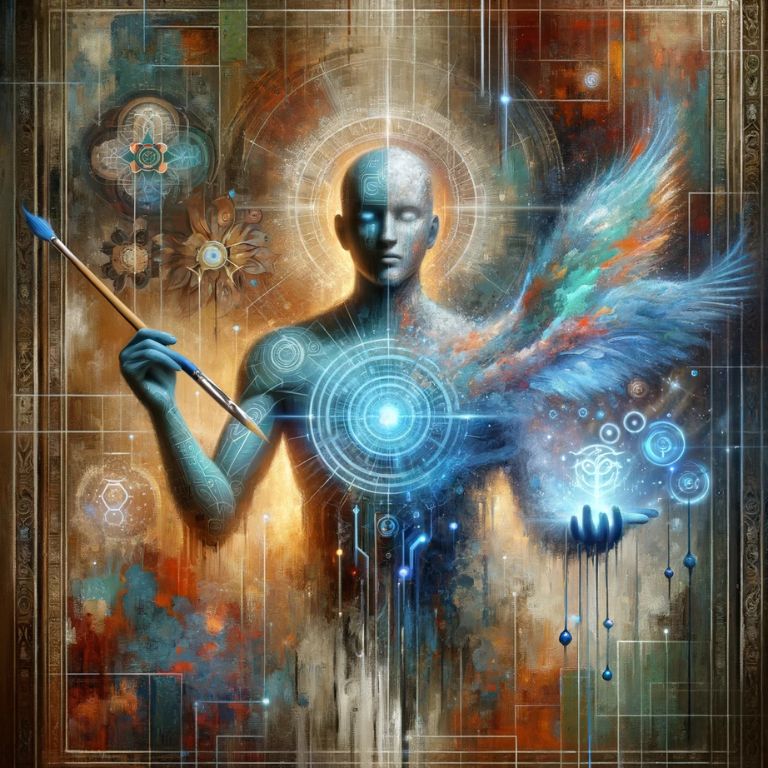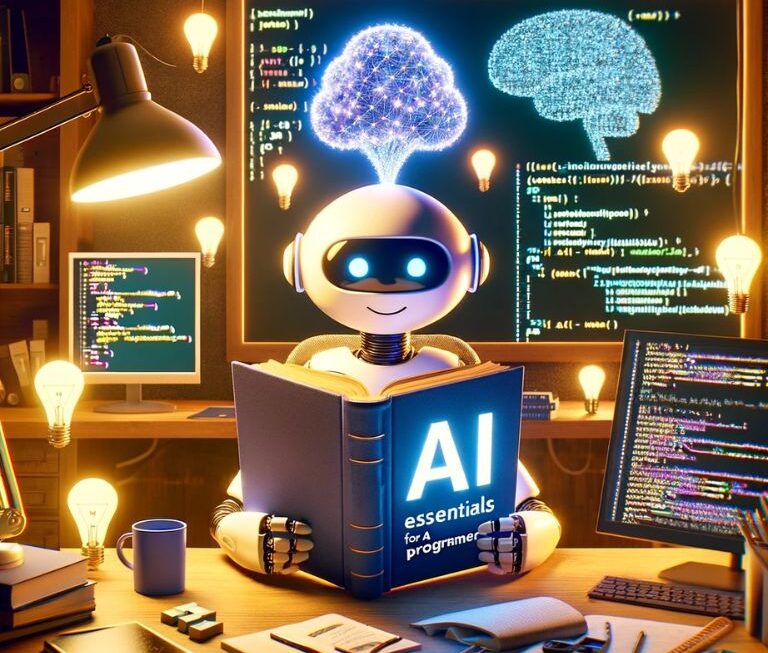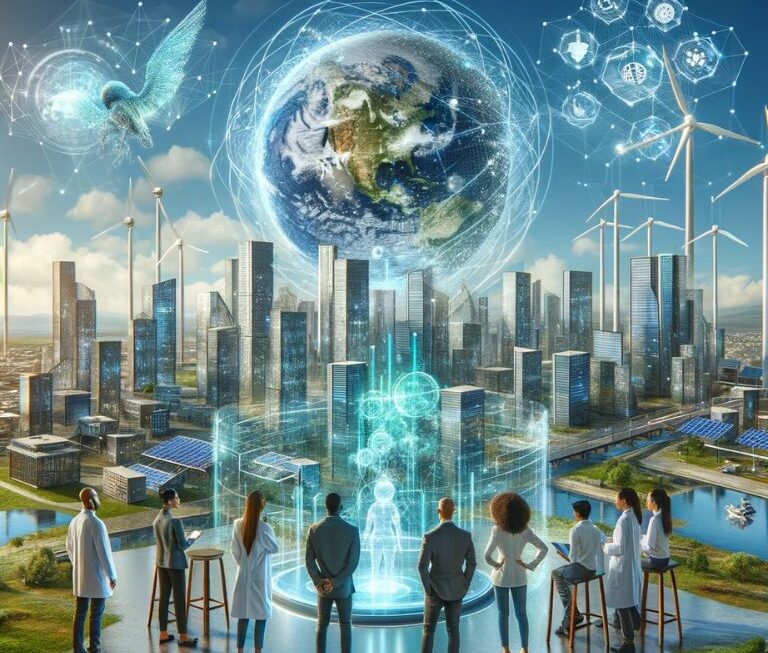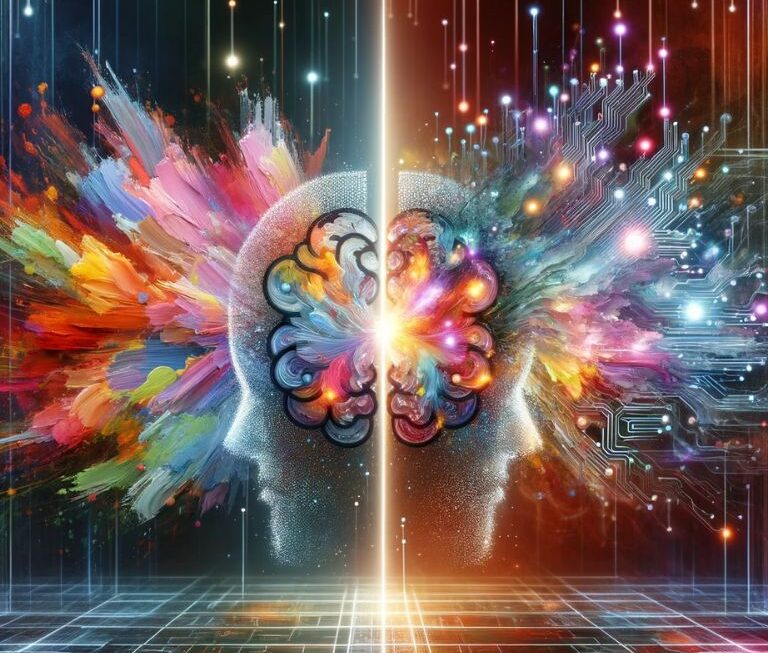In the realm of creativity and innovation, the convergence of artistry and Generative AI technology marks a groundbreaking epoch. This fusion is not merely a technological advancement; it’s a revolutionary approach to how we perceive, create, and interact with art. Generative AI, a subset of artificial intelligence, leverages machine learning algorithms to generate new content, be it images, sounds, text, or even physical objects. Its application in the arts is transforming the traditional boundaries and opening new frontiers for exploration and expression.
Defining Generative AI in the Arts
Generative AI refers to systems that use data inputs and sophisticated algorithms to create content autonomously or semi-autonomously. This technology does not replace human creativity but rather augments it, offering artists new tools and mediums to express their vision. From generating novel artworks to providing creative suggestions, Generative AI is becoming a collaborator in the artistic process.
The Synergy of Human and Machine Creativity
The intersection of artistry and Generative AI is not about machines overtaking human creativity but about a symbiotic relationship that enhances both. Artists provide the emotional depth, cultural context, and creative direction, while AI contributes its immense processing power and pattern recognition capabilities. This collaboration leads to unprecedented forms of art that were unimaginable a few decades ago.
Exploring New Avenues in Art Creation
Generative AI has opened the door to a variety of novel art forms. Algorithms can now create realistic images, compose music, write poetry, and even design functional objects. These creations often blur the line between human-made and machine-generated, leading to fascinating debates about authorship and creativity.
| Aspect | Description |
| Role of Data | Fuel that powers Generative AI |
| Data Analysis | Analyzing vast datasets of existing artworks, styles, or patterns |
| AI Learning | AI algorithms learn to emulate and innovate upon these formats |
| Process Guided by Parameters and Goals | The process is not random but guided by human-set parameters and goals |
| Alignment with Artist’s Vision | Ensuring that the output aligns with the artist’s vision |
Generative AI as a Tool for Artistic Expression
Generative AI is not just a technological tool but a new medium for artistic expression. It offers artists a way to experiment with complex patterns and data-driven aesthetics, pushing the boundaries of what is possible in art. As this technology evolves, it will continue to offer new canvases and palettes for artists to explore.
Historical Context of Art and Technology
Evolution of Art with Technological Advancements
The history of art is intrinsically linked to the evolution of technology. From the invention of oil paints in the Renaissance, which brought about a revolution in color and texture, to the camera in the 19th century challenging artists to explore beyond realism, technology has always been a catalyst for artistic evolution. The digital era ushered in a new wave of tools and mediums, from digital photography to 3D printing, each transforming the artist’s canvas. These advancements have continually expanded the boundaries of what can be considered art, enabling artists to experiment with new forms and techniques.
Milestones in Art and AI Collaboration
The synergy between art and AI has seen significant milestones. Computer graphics in the late 20th century paved the way for digital art and laid the foundation for AI’s artistic involvement. In the early 21st century, AI algorithms began crafting paintings and music, intertwining programming with artistic expression. A pivotal moment arrived in 2018 when an AI-generated artwork was auctioned at Christie’s, marking the cultural and commercial acceptance of AI in art. These milestones underscore AI’s potential and signify an evolving recognition of AI as a legitimate creative collaborator.
Mechanics of Generative AI in Art Creation
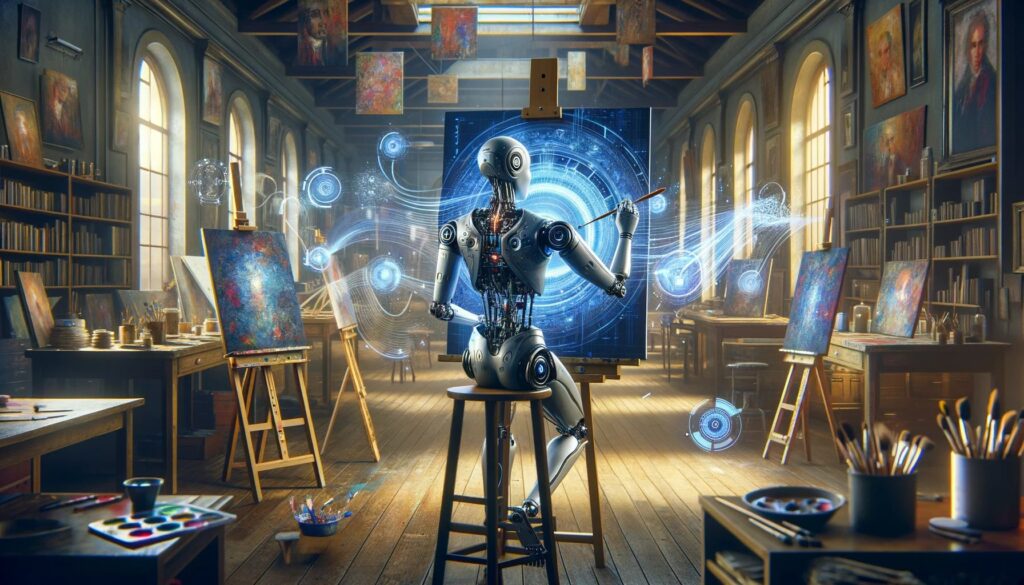
Understanding How Generative AI Works
Generative AI relies on advanced algorithms, primarily neural networks, to analyze extensive datasets and generate fresh content. These systems learn from existing art, recognizing patterns, styles, and techniques. They autonomously make creative decisions, yielding surprising and innovative results, in contrast to traditional computer graphics that require explicit instructions. The AI’s capacity to learn from examples and iteratively enhance its creations often results in art that’s indistinguishable from human-made works.
Examples of AI Algorithms in Art
- CNNs: Predominantly in image tasks, enabling AI to create intricate art.
- RNNs: Effective in music and text, ideal for composing music and poetry.
- GANs: Create realistic artworks and photos through network competition.
- Transformative NNs: Blend artistic styles in images.
- Deep Dream: Google’s pareidolia-based technique for surrealistic art.
Human-AI Collaboration: A New Era of Creativity
Examples of Artists Employing Generative AI
- Refik Anadol: A media artist known for merging data and AI in large-scale public art installations.
- Sougwen Chung: An artist who collaborates with AI-programmed robotic arms in her drawing performances.
- Mario Klingemann: A neural network art pioneer who experiments with GANs to create intricate artworks.
- Anna Ridler: An artist who uses AI to blend traditional art concepts with unique datasets, such as thousands of tulip photos.
Ethical Considerations and Artistic Integrity
As AI becomes more ingrained in the art world, ethical dilemmas and questions about artistic integrity arise. AI’s role in art sparks debates on authorship and originality, with uncertainty over whether the creator is the artist who designed the algorithm or the AI itself. Transparency in AI processes and the risk of biases from training data are also contentious topics. Artists and technologists are actively addressing these concerns to uphold ethical standards while harnessing AI’s creative potential, shaping a responsible and innovative future for AI in art.
Transformative Impact on Various Art Forms
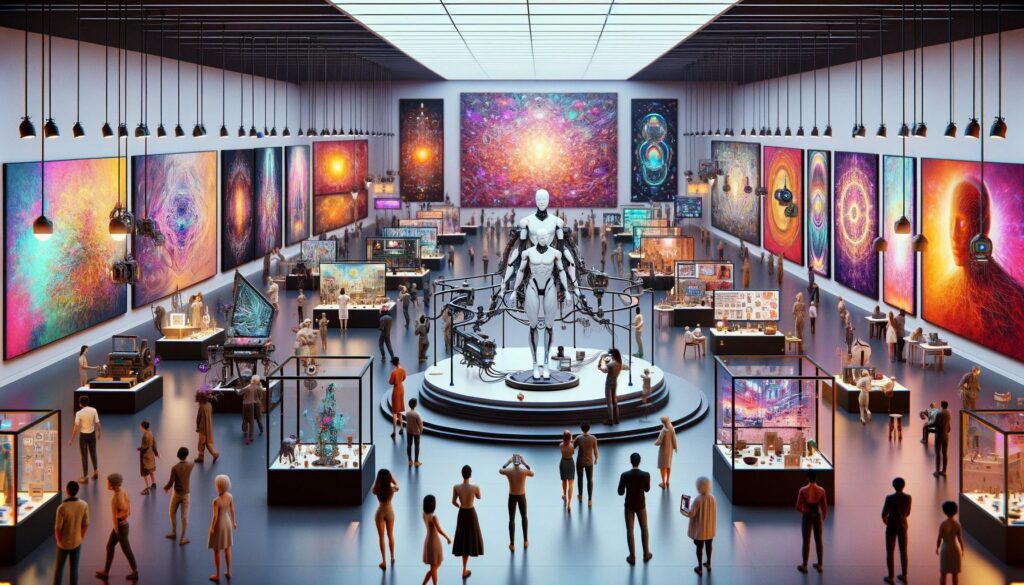
Influence on Painting, Music, Literature, and More
Generative AI is reshaping art across various domains. In painting, AI algorithms create intricate images with fresh dimensions in color and form. In music, AI composes diverse pieces, merging styles innovatively. Literature benefits from AI in experimental poetry and storytelling, producing unique literary forms. Even in sculpture and installation art, AI aids in crafting complex structures. This cross-disciplinary shift in art production blends human creativity with algorithmic precision, marking a significant transformation.
Prospective Opportunities Across Various Art Fields
- Interactive Art: AI enhances viewer experiences, enabling personalized interactions with art.
- Cinematography: AI revolutionizes filmmaking, aiding in scriptwriting, visual effects, and potentially directing.
- Fashion: AI predicts trends and crafts personalized clothing designs.
- Architecture: AI helps design sustainable urban spaces, merging aesthetics with functionality.
- Performance: AI-driven installations adapt and respond to audience interactions in performance art.
Challenges and Opportunities in the AI-Driven Art World
Addressing Biases and Limitations of AI in Art
- Data Bias: AI systems learn from datasets that may contain biases. Ensuring diverse and inclusive data is crucial to prevent biased artistic outputs.
- Authenticity and Originality: Distinguishing between AI-assisted art and purely human creations raises questions about authenticity and originality in art.
- Ethical Use of Data: Responsible use of personal and copyrighted data in training AI models is vital to maintain ethical standards in AI-generated art.
- Understanding AI Limitations: Recognizing that AI is a tool, not a replacement for human creativity, is essential. AI-generated art lacks the emotional depth and cultural context that human artists bring.
Opportunities for Innovation and Growth
- New Mediums: AI introduces novel artistic forms and expressions, expanding creative possibilities.
- Cross-Disciplinary Collaboration: AI promotes collaboration among artists, technologists, and scientists, driving innovation.
- Accessibility: AI democratizes art creation, enabling non-artists to engage creatively.
- Education: AI aids students and emerging artists in learning and experimenting with diverse styles.
- Cultural Preservation: AI helps preserve and revive historical and cultural artworks, revealing lost or aging art forms.
Conclusion: The Future of Art and AI Integration
Generative AI’s impact on the art world marks a transformative moment in artistic expression. This blend of artistry and AI technology is reshaping creativity, pushing boundaries, and offering boundless innovation. The future envisions AI as a creative catalyst, not a replacement, yet navigating issues of authorship, authenticity, and ethics is crucial. Embracing this new era requires collaboration, ethics, and inclusivity. The integration of AI in art isn’t just technological advancement; it’s about creating a future where art remains a vibrant, inclusive reflection of human experience, enriched by AI’s incredible potential.

